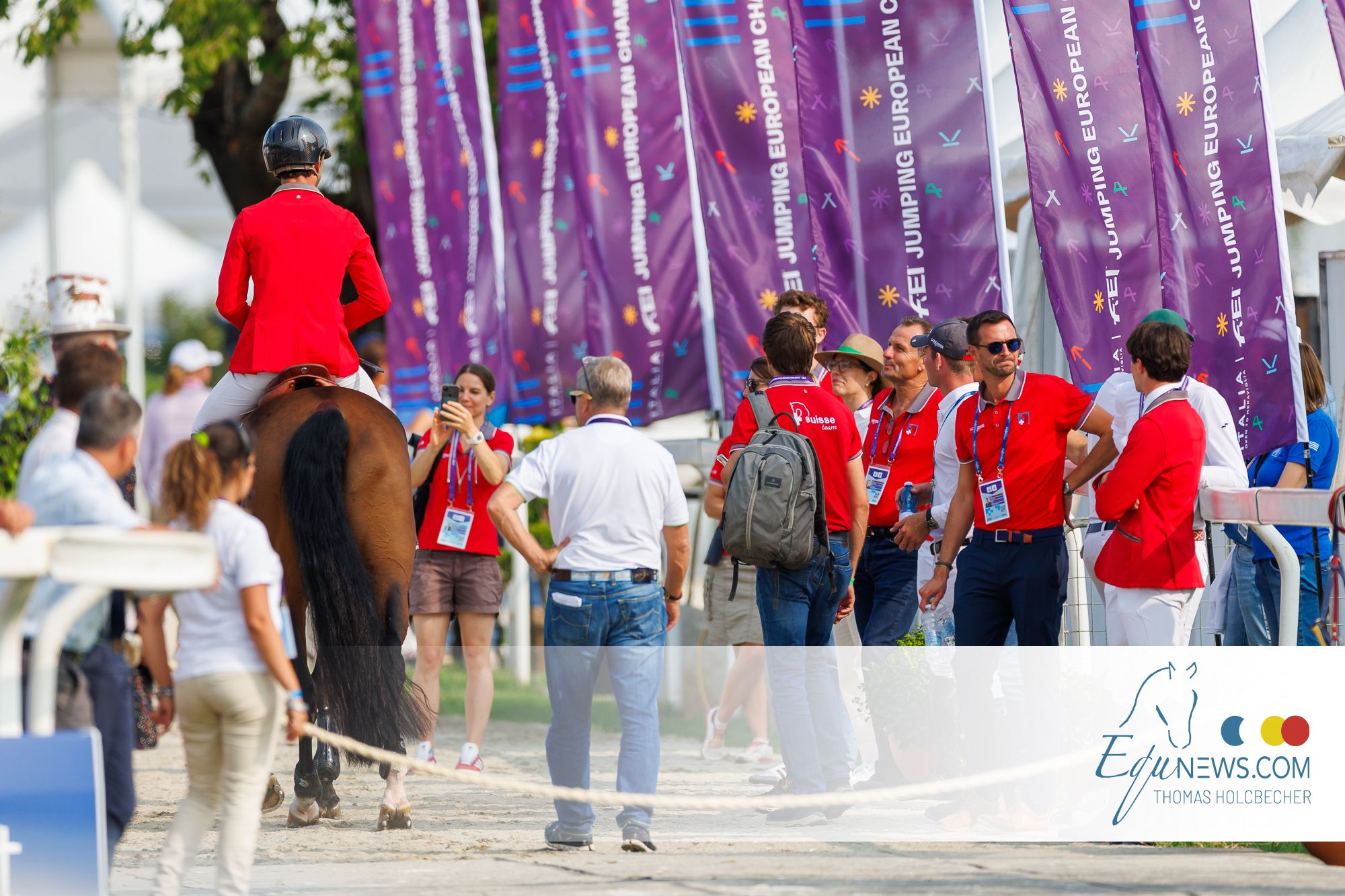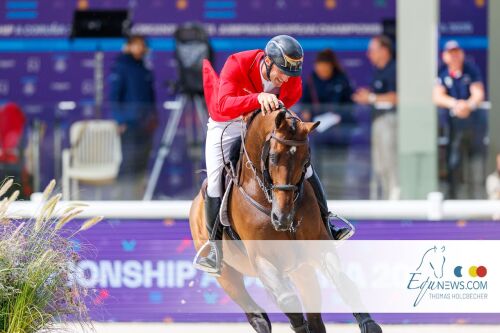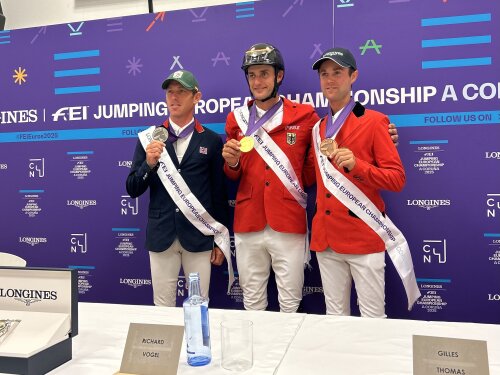The 2025 Longines FEI Jumping European Championship is shaping up to be one of the most anticipated events in recent history. With world-class horse-and-rider combinations and powerhouse nations going head-to-head, the stakes are high. This week the showjumping action unfolds in A Coruna! We've analyzed the field using a custom statistical model based on the ELO rating method to estimate each rider’s chances of victory or a top 5 finish, both individually and for teams.
But before diving into the predictions, here's a breakdown of the championship format so you can better understand how each phase contributes to the overall standings.
Format: How the Championship Works
The championship unfolds over four days of competition, starting after a veterinary inspection on Tuesday at 10:30 CET. A second horse inspection will be held on Saturday at 9:30 CET, ahead of Sunday's individual final.
-
Tuesday: After the vet check, a training session begins at 15:00 CET, giving riders and horses a final chance to adjust to the competition arena.
-
Wednesday (Competition 1): The first official competition kicks off at 15:00 CET. It's a Table C class (max. 1.50m), judged solely by time. Riders receive penalty scores based on a formula that converts time into points, which are then used to seed the rankings.
-
Thursday & Friday (Competitions 2 & 3): These two rounds are Table A classes (max. 1.60m) and determine the team medals. Thursday starts at 15:00 CET with individual riders first, followed by teams grouped based on Wednesday’s results.
On Friday at 16:15 CET, only the top 50 ranked combinations and top 10 teams advance. Teams carry forward their penalties and compete in reverse order of their rankings. The lowest three penalties from each team count—following the drop-score rule. The team with the fewest penalties wins the European Team title.
-
Sunday (Individual Final): The final showdown starts at 14:00 CET. It's split into two Table A rounds (max. 1.60m). Only the top 25 riders start Round 1, and just 12 continue to Round 2. The rider with the fewest total penalties after all rounds becomes the Individual European Champion. In case of a tie for medals, a jump-off decides the podium.
Top Individual Contenders
Using an ELO-like system (1000–1500), we calculated win and top 5 probabilities using a logistic model. Here are the top 10 rider-horse combinations:
| Nation | Rider | Horse | ELO | Win Chance | Top 5 Chance |
|---|---|---|---|---|---|
| BEL | Pieter Devos | Casual DV Z | 1500 | 91.7% | 94.0% |
| BEL | Abdel Saïd | Bonne Amie | 1479 | 89.6% | 92.7% |
| BEL | Gilles Thomas | Ermitage Kalone | 1459 | 87.1% | 91.2% |
| AUT | Katharina Rhomberg | Cuma 5 | 1295 | 48.4% | 66.7% |
| BEL | Nicola Philippaerts | Katanga v/h Dingeshof | 1274 | 42.3% | 62.0% |
| AUT | Max Kühner | EIC Cooley Jump the Q | 1274 | 42.3% | 62.0% |
| DEN | Andreas Schou | Napoli vh Nederassenthof | 1267 | 40.3% | 60.4% |
| CZE | Ales Opatrny | Kapsones W | 1240 | 32.7% | 53.7% |
| CZE | Vaclav Stanek | Quintin | 1219 | 27.5% | 48.5% |
| BEL | Thibeau Spits | Impress-K v't Kattenheye Z | 1212 | 25.9% | 46.8% |
Analysis & Team Outlook
Belgium: The Ones to Beat
Statistically, Belgium is in a league of its own. With three of the top four riders, their team ELO average exceeds 1430. Pieter Devos, Abdel Saïd, and Gilles Thomas are all heavy favorites both individually and as a collective force. Barring major errors, Belgium is the clear gold-medal favorite in the team event.
Austria & Denmark: Podium Challengers
Katharina Rhomberg and Max Kühner bring solid potential for Austria, while Andreas Schou leads a promising Danish team. They lack Belgium’s elite depth but could contest silver or bronze.
Czech Republic: Consistent and Underestimated
With strong mid-tier ELO scores, the Czech team may lack a breakout superstar, but their consistency across four riders gives them an edge in team rankings—especially with the drop-score rule in play.
France, Germany, Great Britain:
Powerful individuals like Julien Epaillard, Richard Vogel, and Ben Maher add star appeal. France and Germany show team potential, though their performance is slightly behind Belgium’s elite average.
Can we even predict equestrian sports?
The numbers don’t lie: Belgium is the heavy favorite. However, equestrian sport is famously unpredictable. Course design, weather, pressure, and even one unlucky rail can change everything. Still, based on historical data and current form, expect Belgium to be the nation to watch in both the team and individual competitions.
Stay tuned for updates and revised probabilities as the rounds unfold, and let the 2025 European Championships begin!



